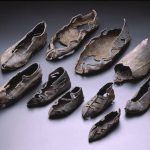Children up to the age of fourteen wore a medallion called a “bulla” around their necks. The medallions were designed to protect children from evil spirits and forces.
The bullae were round in shape and consisted of two convex plates. The bull was made of various metals, depending on the status of the family: silver, gold or bronze. Inside the medallion, an amulet was placed, which was usually a phallus – a symbol that brought good luck in antiquity. Such necklaces were worn by boys until they reached the male age – i.e. the age of 16. Bulla was an important artefact of every Roman, which he took out on important occasions, incl. when he became a leader or took part in a parade.
The girls did not wear bull, and lunula – the amulet they took off on their wedding day. From that moment on, the woman about to get married began to dress like a real Roman lady.







